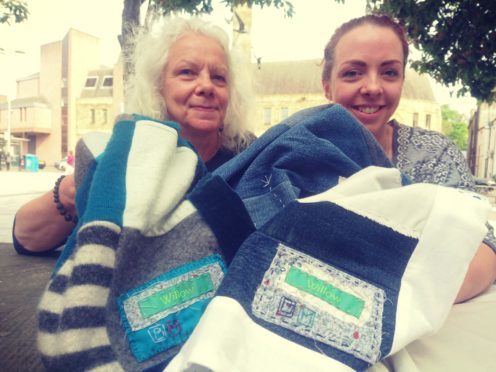Whatever colour you order it in, you can be sure it is green.
An Easter Ross mother and daughter have taken their inspiration from Japan to start a bespoke textile business to reduce fabric waste.
Beatrice Wood and daughter Mairi McConnachie will be taking old or disused material and retailoring them to create new items.
Willow, based at Hilton of Cadboll, officially launched at the weekend.
Among the redundant clothing used by the business will be duvet covers, sheets and old blankets which they will use to produce a range of throws, wraps, and keepsake bags and even badges.
Now they are seeking donations from businesses or individuals looking to offload old fabrics or those who want to place an order for handmade bespoke items.
Mrs Wood, 63, said: “Clothes either go to charity shops for re-use or end up being thrown out or shredded for industrial rags or insulating material.
“But, in between, there’s all this lovely fabric that may not be able to be used as it is but can be made into something else. That’s what we want to target.”
Mrs Wood explained that they have been inspired to start the business by the Japanese philosophy of wabi sabi.
According to her that means “valuing imperfection, recognising that nothing is ever finished with, and seeing the beauty in wear and tear.”
She said: “We found out about how the Japanese, over centuries, have reused bits of material. They would salvage nice material from a kimono and use it to cover a futon, and when that wasn’t any good, the material was used to patch a work jacket.
“The work jacket, over years, would just become thicker and thicker because it had so many patches on it, and there is now a greater appreciation of the beauty and family significance of these items.”
“All the wee bits of fabric have a memory attached to a time or a person, and that really captured our imagination.
“Our ambition is to expand production in future, and that really depends on the popularity of our products and our ability to salvage enough fabric to work with.”
